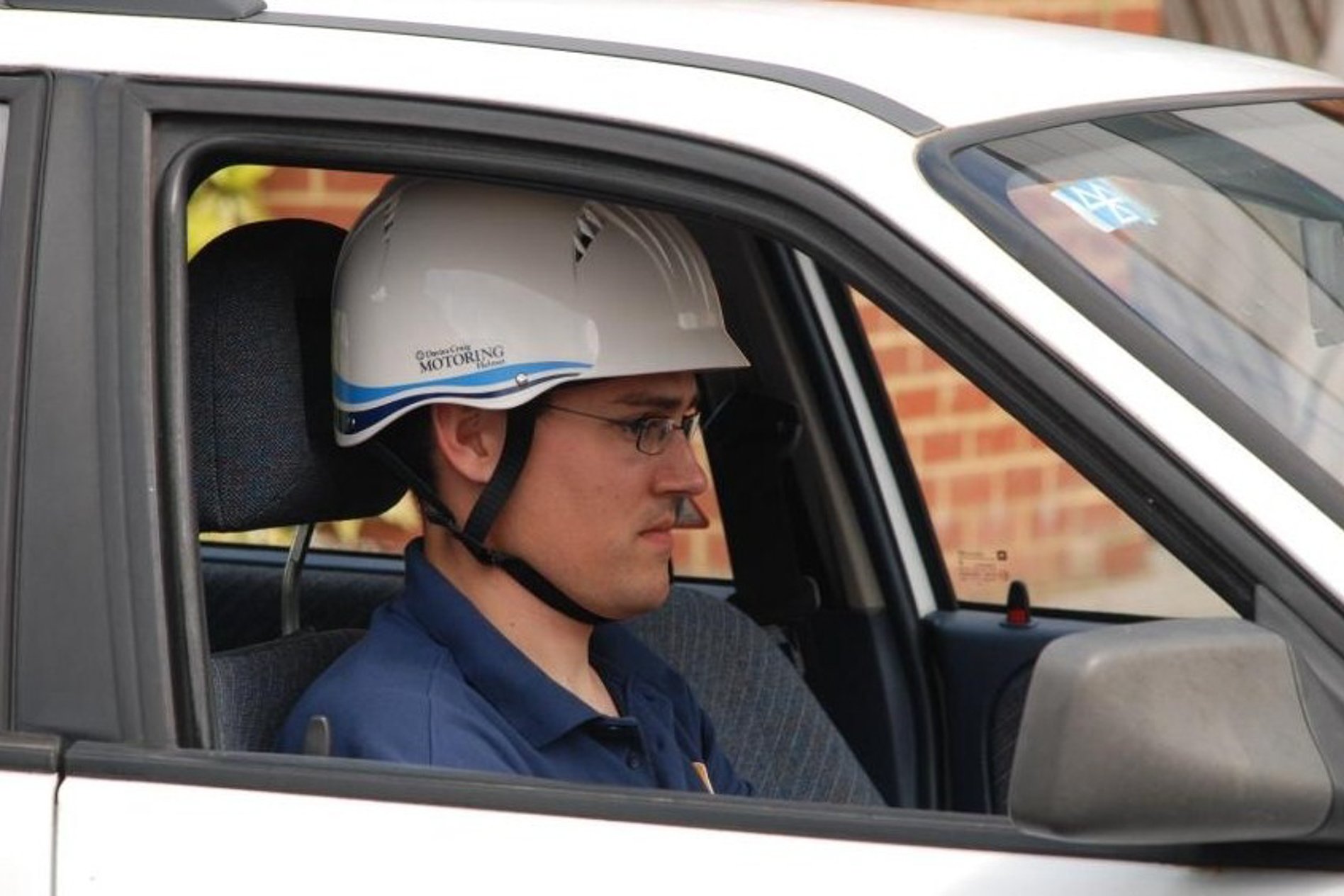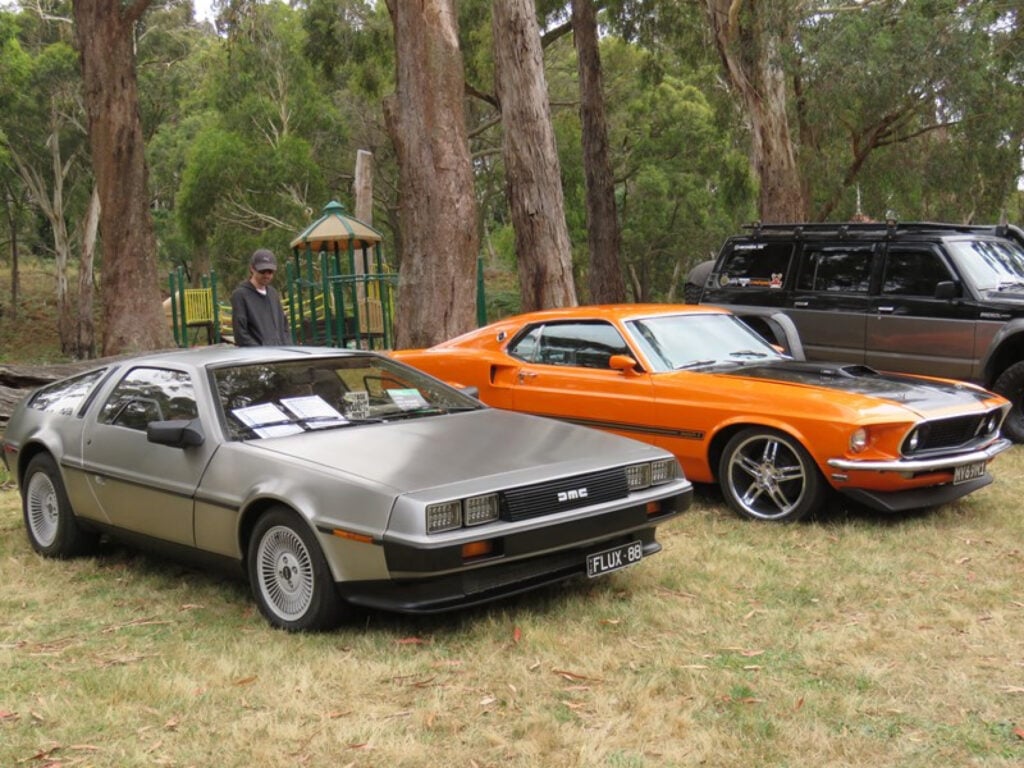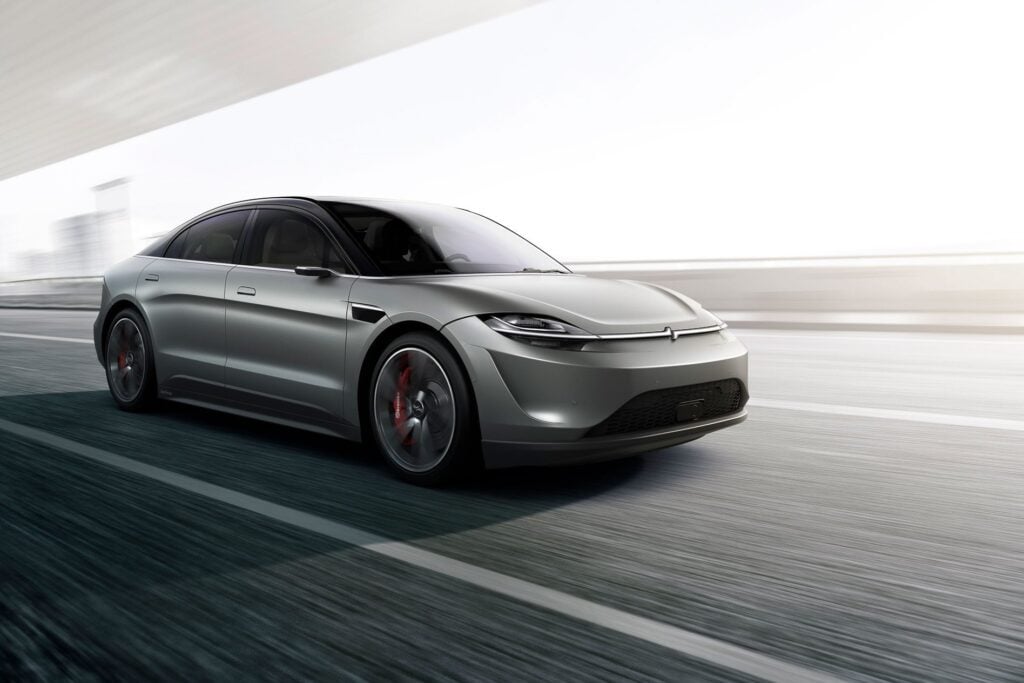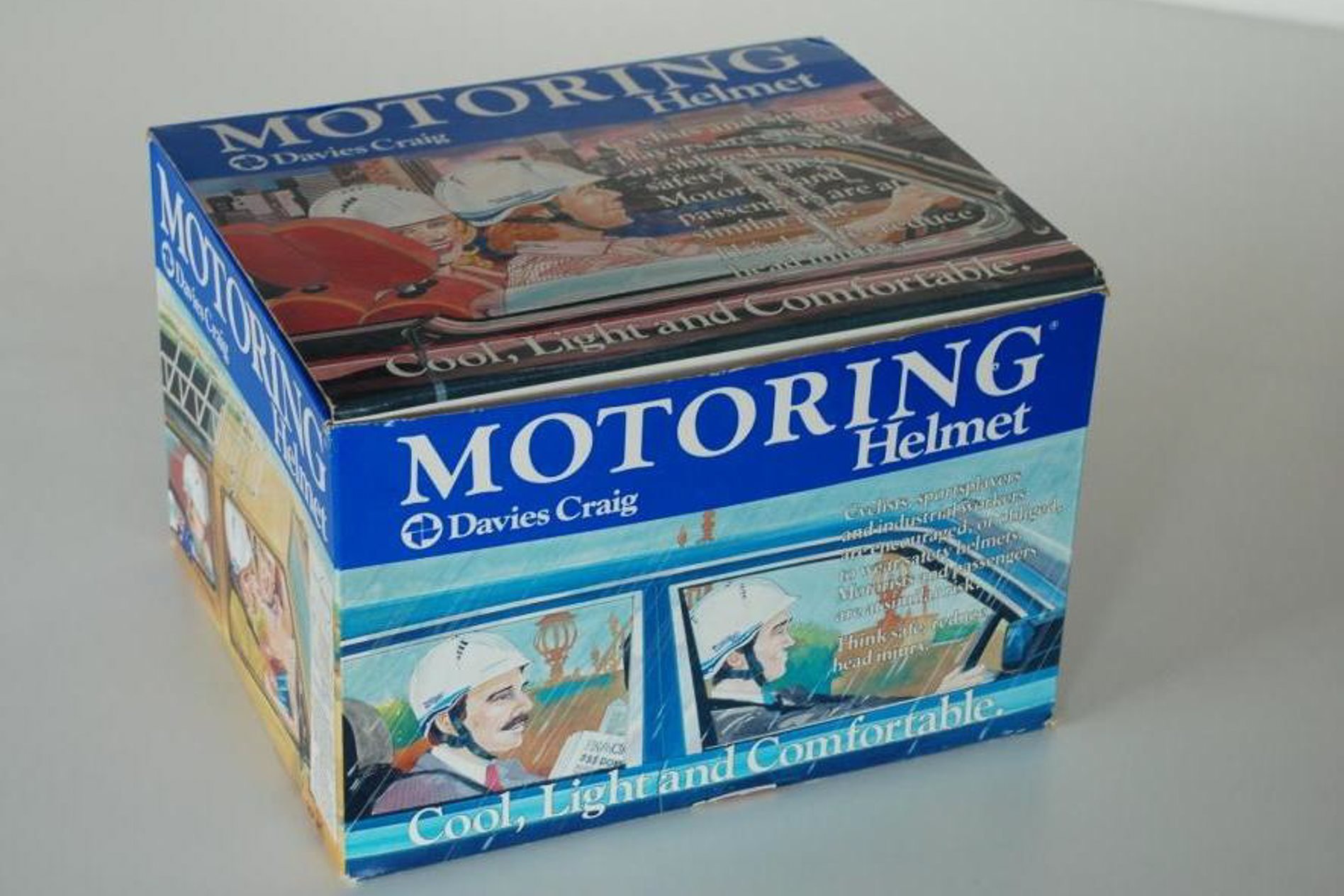
Imagine for a second that you’re heading out the door to jump in your car to head to work, or to drop the kids off to sport practice. You’ve grabbed your keys, bag and phone, grab your helmet from the shelf and head out to start your…
Wait a minute, you say. A helmet?
That was the dream of renowned Australian automotive parts company Davies, Craig, which developed and released the Motoring Helmet in the mid-1980s.
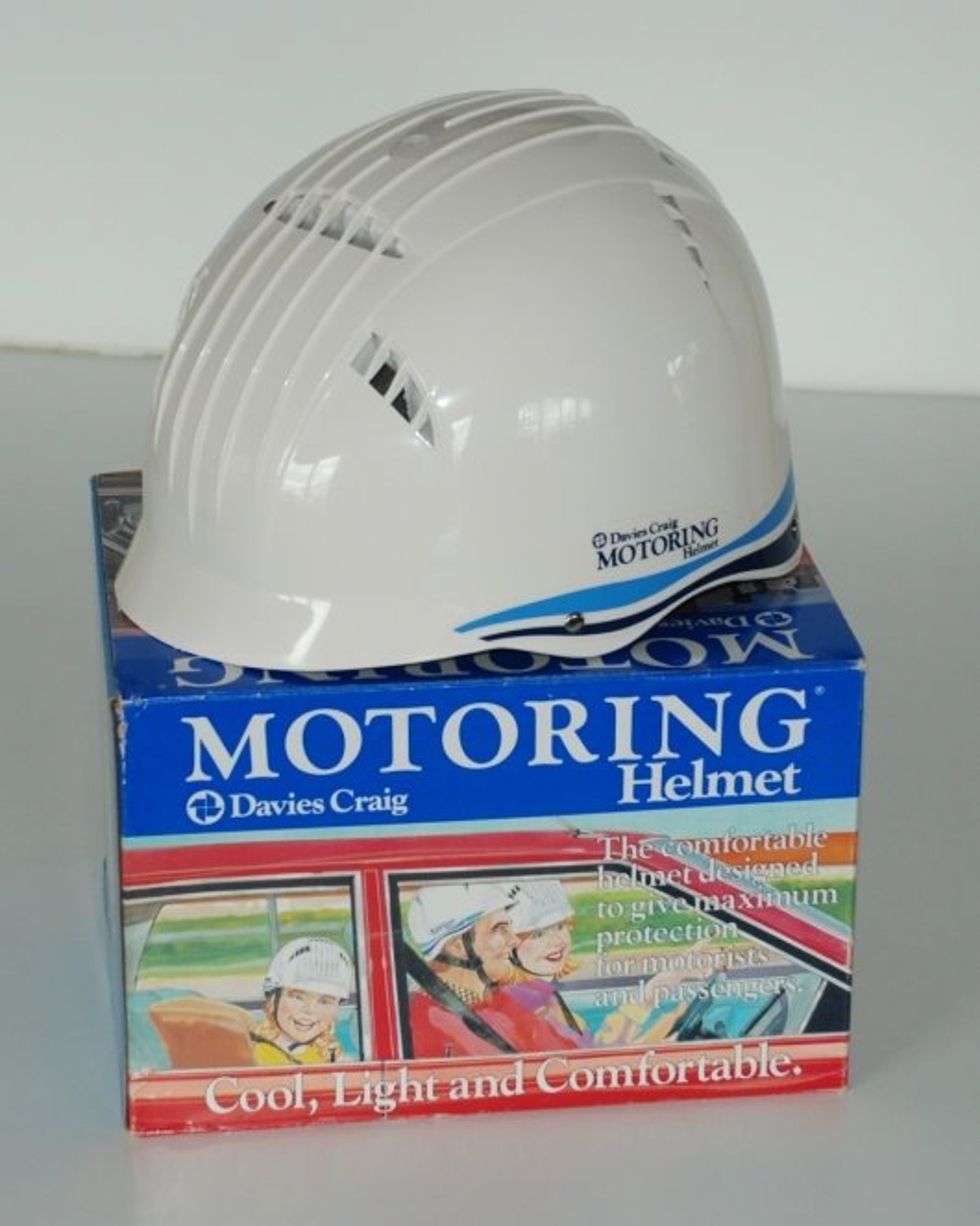
Looking for all the world like the Rosebank Stackhat cycling lid that was born of compulsory bicycling helmets in the early 1990s, the Davies, Craig Motoring helmet is reportedly ‘cool, light and comfortable’, according to the packaging – though in all honesty, the rigid polycarbonate lid looks like none of those things.
“Davies, Craig recommends you wear your Motoring Helmet at all times when motoring but particularly at the following, documented high-risk times,” warn the perculiarly detailed instructions.
- After consuming any alcohol.
- When other drivers are likely to have consumed alcohol especially 4:00PM to 2:00AM Fridays and Saturdays.
- After dark and during twilight.
- In rain or when the roads are wet.
- During long trips when you may become tired.
- Within five kilometres of your home or destination.
- Christmas, Easter and long weekends.
- If you are aged under 25 or over 60.
“Ultimately, motoring helmets will be commonplace, but in the meantime, you will be a leader whilst those who may consider your good sense misplaced, will follow.”
Well… no.
The idea of wearing head protection in a car isn’t necessarily the silliest thing in the world. A study conducted by the Monash University Accident Research Centre in the early part of the 2000s demonstrated that, by wearing a headband made of polycarbonate, head injuries could be reduced by 25 percent, while a band made of a deformable corrugated material increased that to 67 percent.
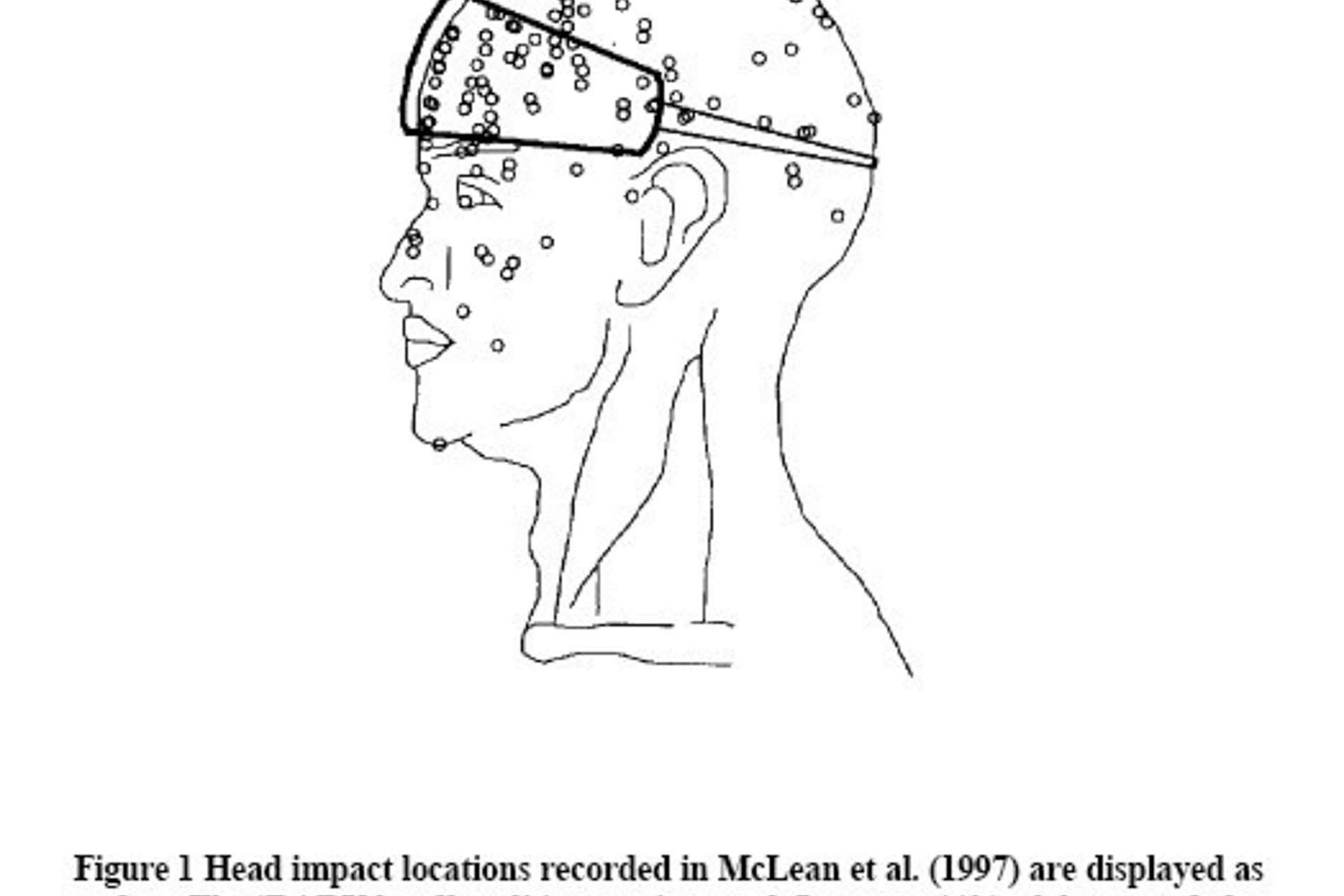
“Head injuries to car occupants in crashes on Australian roads are a major cause of death and permanent brain damage,” read part of the report. “Preventing impacts to the head and reducing the severity of the head impacts that do occur has the potential to save many lives.”
And of course, the helmet is an integral part of motorsport, as is the use of head and neck restraints, fixed-backed seats and harnesses as part of a complete driver protection system.
The modern vehicle is, of course, now much better equipped to reduce the severity of head injuries than one from the era of the Motoring Helmet – the airbag is the number one method of protecting occupants from both side and front impacts, with side-curtain airbags designed to prevent many of the injuries that the helmet was designed to protect the occupant from.
We love the passion behind the ultimately doomed project and salute the engineers and team at Davies’ Craig for putting the Aussie once at the front of mind.
